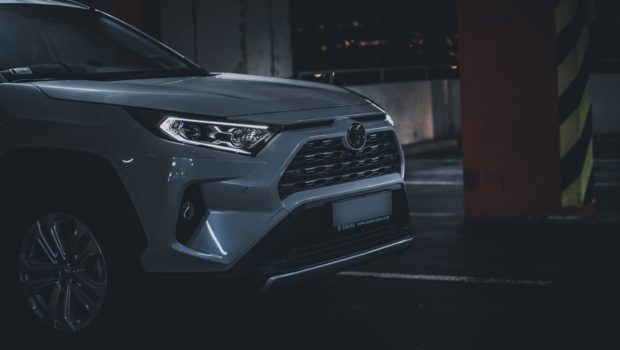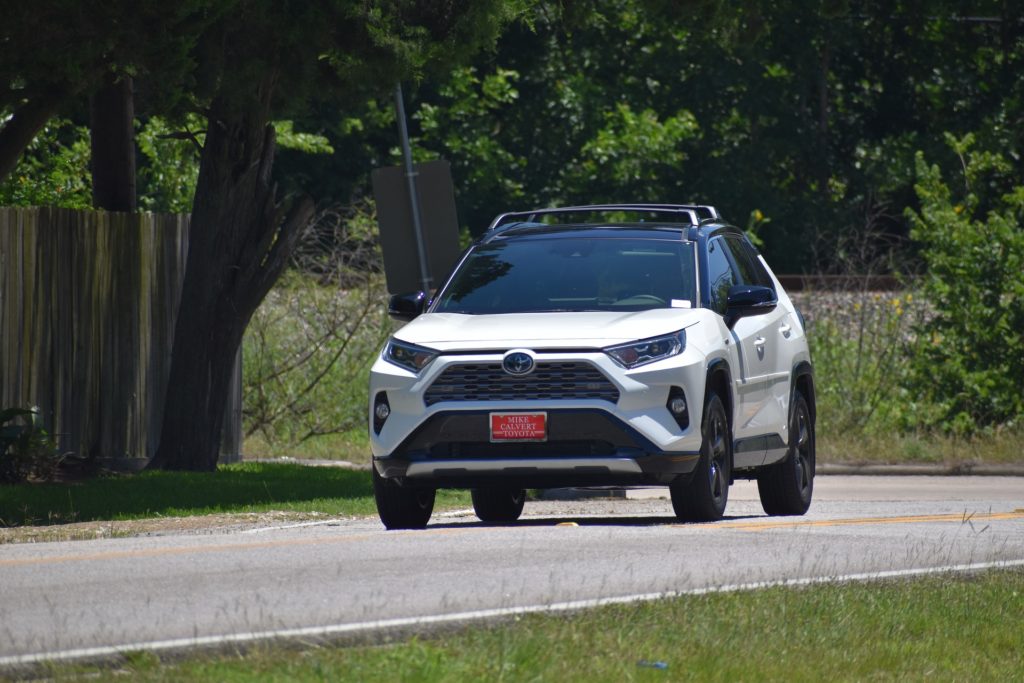How Toyota RAV4 became the undisputed best-seller?
Toyota introduced the RAV4 into the US market back in 1996 after its debut in 1994 and was one of the first crossovers to be based on a unibody platform. This allowed it to close the gap between traditional SUVs and regular cars by providing excellent drivability and off-road capability without compromising on comfort or on-road manners that plague SUVs of the era.
From unique beginnings to becoming the best-selling Toyota on the market, beating even the Camry in recent years, we’ll take a look at how this seemingly ordinary crossover conquered the market over the years.
The current 2021 Toyota RAV4 is one of the most well-rounded options on the market, offering a comfortable ride while still being decently capable off-road. If you’re on the lookout for a pickup truck, the 2021 Toyota Tundra is still one of the best options on the market.
The RAV4’s story began back in 1989 when some engineers at Toyota decided to make a concept car with wild design elements and off-road capability. At a time when the Japanese economy was booming with excellent car sales, Toyota decided to spend some of the dough to design the unique and quirky crossover that we now know today as the RAV4. The first concept was unveiled at the Tokyo Motor Show back in 1989 along with the equally quirky Toyota Sera and several other cars.
The RAV4 was initially dubbed as a “neo-urban offroader” because of its mixed design that combines a crossover and an SUV. At the time of the RAV4’s reveal, Toyota’s racing department was very successful with the rally scene thanks to their advanced all-wheel-drive system which found itself in vehicles like the Celica All-Trac Turbo.
Toyota gave the RAV4 (RAV-FOUR back then) a similar system which gave it excellent off-road capability, especially when combined with its lightweight unibody construction and smaller dimensions.
Around the same time, competitors like Suzuki were also dominating the market with the Samurai, a similar small SUV but with body-on-frame construction. This gave the RAV4 an advantage thanks to its car-like easy driving characteristics courtesy of the unibody construction.
As with most concept cars, a lot of design elements didn’t make it to the final production version. Toyota unveiled a revised version of the RAV4 in 1993 which ditched most of the unique elements and represents the final production model closely.
The idea of the RAV4 was simple: to create a perfect blend between a crossover and an SUV that is equally at home on the road with a comfortable ride, as it is while doing some off-roading. In fact, the RAV4 name actually stands for “Recreational Active Vehicle with 4-wheel-drive”. Being one of the first unibody crossovers on the market gave it an edge over competitors especially during its initial years.
First Generation (1994 – 2000)
The first-generation model was radically different from the concept model but still retained some unique elements. The RAV4 entered the market in Europe and Japan first back in 1994 and only reached US shores 2 years later in 1996. Being the first crossover SUV in the market, the RAV4 was an instant success.
Toyota only offered one engine option with the first generation RAV4, a 2.0L Inline-4 that produced 119 hp, which was later revised in 1997 with a power bump to 127 hp. Transmission duties were done either by a 5-speed manual or a 4-speed automatic, with all-wheel-drive available as an option.
Toyota experimented a lot with this generation of the RAV4, bringing out several different versions over the years.
Initially, the RAV4 was available in a three-door and five-door version, with the latter being introduced first. In 1997, Toyota introduced a fully-electric model for fleet lease. The EV model got a 27 kWh Nickel-metal hydride battery which gave it a range of just 120 miles. Powering the EV was an electric motor producing 67 hp and 140 lb-ft of torque. Unfortunately, Toyota discontinued the EV model in 2003 and reintroduced it only a decade later, in 2012. The RAV4 also won the Automobile of the Year award in 1997 thanks to its popularity.
Toyota also released a convertible version of the RAV4 in 1998 with the 3-door model. The 3-door model was discontinued in 1999, which was also the last year for the first generation.
Despite being unique for its time, the RAV4 sold in great numbers, with sales crossing 100,000 units annually during its initial years.
Second Generation (2000 – 2005)
The second generation of the RAV4 went on sale in July 2000 and received a complete redesign. The American market only received the 5-door model, while other markets also had the option of a 3-door model. The RAV4 now shared its underpinnings with the Toyota Carina and Corolla and was based on the Toyota MC platform.
The 2.0L Inline-4 engine continues to do its duty under the hood, although the power was bumped to 148 hp to fend off the new competition. The transmissions were also carried over, with both the 4-speed automatic and 5-speed manual still on offer. An all-wheel-drive system was also offered as an option.
The new generation also received a more spacious interior, making it a lot more practical and comfortable. The 2.0L engine was finally replaced in 2004 with a more powerful 2.4L engine which produces 161 hp, although transmission options remained the same. The styling was also refreshed for 2004, and the American models also received an improved safety structure and stability control as standard.
With the new model, sales continued to rise, and the competition got tougher with a lot more crossovers being launched.
Third Generation (2006 – 2012)
The RAV4 received a significant upsize with the third generation, with an increase in length by a massive 14 inches, making it a lot more practical and jumping segments. With the added length, Toyota also added a third row for increased passenger capacity. The base models received a newer 2.5L engine, with a power bump to 166 hp.
Toyota also offered the RAV4 with a powerful 3.5L V6 engine which produces an impressive 269 hp and is paired with a new 5-speed automatic transmission. With the new V6 engine, the RAV4 became much more sprightly to drive, with performance comparable to SUVs from a segment above. Handling was also surprising thanks to the unibody construction.
The third-generation model received a facelift in 2009 with a power bump to the base 2.5L engine and some styling updates. As the third generation was nearing its end, Toyota reintroduced an EV model, this time with a range of up to 100 miles and a power output of 154 hp. The electric powertrain was borrowed from Tesla.
The EV model was later discontinued in 2014. With the new generation, sales skyrocketed to more than 150,000 units sold annually till the fourth generation hit the market.
Fourth Generation (2013 – 2018)
Toyota decided to scale back the RAV4 with the fourth generation by discontinuing the V6 model, making the 2.5L engine the only option, now paired with a new 6-speed automatic transmission. With a more compact and easy-to-use model in mind, the RAV4 became smaller, and also ditched the third row. A lot of smaller changes were also made including the underfloor spare and a traditional tailgate design.
For 2016, the RAV4 received a facelift and also received a new Hybrid model which was faster than the regular model by a considerable margin. The new Hybrid shares its drivetrain with the Lexus NX with plenty of performance on offer, and tops the efficiency charts, beating out all other crossovers.
Fortunately, the new generation was a success, with sales skyrocketing again to more than 200,000 units annually. In 2015, the RAV4 finally entered the top 10 lists with an impressive 315,000 units sold. Sales continued to rise in the coming years, and finally, in 2017, the RAV4 dethroned the Toyota Camry and became the highest-selling Toyota in the market, with more than 400,000 units shifted per year. One of the main reasons for this sudden rise in popularity is because the markets shift to crossovers and SUVs, moving away from sedans.
Fifth Generation (2019 – Present)
Finally, we reach the fifth generation of the RAV4 which is currently on sale. For this generation, Toyota decided to improve the off-road credibility of the RAV4 by moving away from sleek and conservative designs to more aggressive, rugged, and boxy designs, more resembling an SUV. The new RAV4 also uses a completely new Toyota New Global Architecture platform which significantly improves the handling and drivability of the crossover compared to the previous generation. Despite the new platform, the RAV4 is still available with the 2.5L Inline-4 engine which is now paired to a new 8-speed automatic transmission.
The Hybrid model was launched soon after the base model and continues to get the same powertrain. A plug-in hybrid model was also added in 2020 which pairs bigger electric motors with a higher capacity battery to produce 302 hp, which gives it an impressive 0-60 time of just 5.7 seconds. The RAV4 Prime is also capable of traveling 42 miles with electric power only.
With the fifth generation, Toyota managed to perfect the RAV4, increasing sales further. The RAV4 continues to be the best-selling Toyota, selling more than 400000 units consistently every year and is currently the best-selling non-pickup in the US by a huge margin. The RAV4 beat the Camry by an impressive 100,000 units in 2020.
Even though the RAV4 was conceived as a quirky offroader, it has come a long way over the years to become the best-selling car in the US. One of the main reasons for its popularity is the constant upgrades and facelifts it received over the years. Toyota even backtracked with the fourth generation, making the RAV4 smaller and more compact to appeal to a wider audience. It is currently one of the best and most practical options on the market, backed by Toyota’s legendary reliability.
Hopefully, Toyota will continue to update the RAV4 to make it relevant, helping it hold on to the No.1 spot in the coming years.
Cover Image from Unsplash














